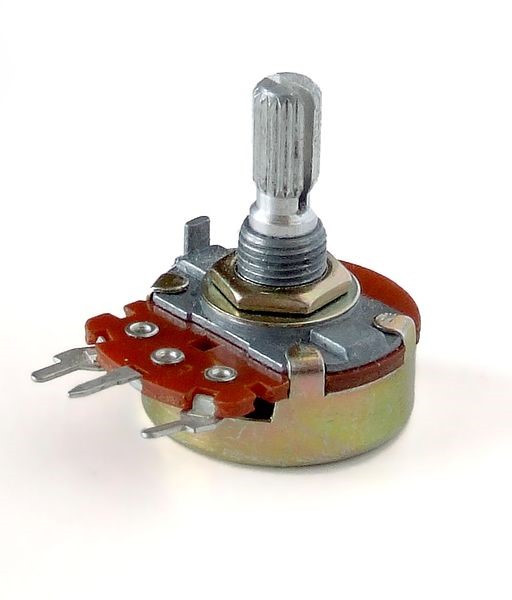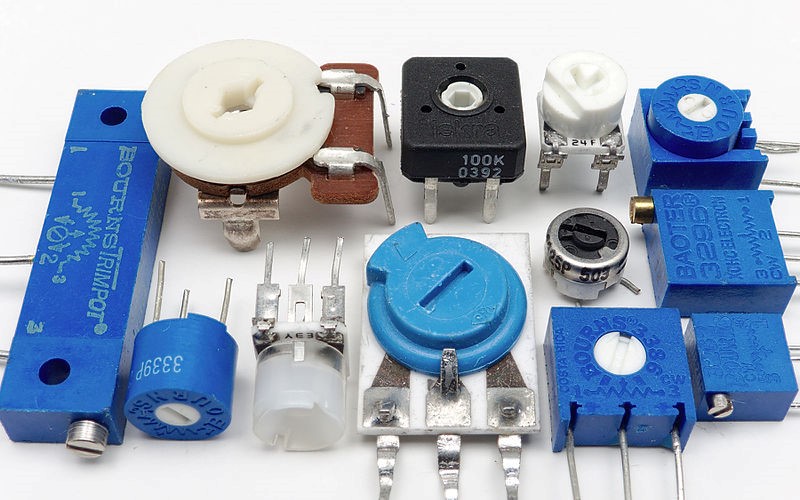A potentiometer, also known as pot, comes in a number of different shapes and can be used in a variety of different applications for daily life. A very common use for them is to control the audio volume in a radio. They were also formerly used to control contrast and brightness in television sets.
On a more scientific level, a potentiometer is a manually adjustable variable resistor that has three terminals.
Potentiometer – so how does it work?
As mentioned above, a potentiometer comes with three terminals. Two connect to a resistive element, while the third terminal connects to an adjustable wiper.
The potentiometer is able to operate as a variable resistor known as a rheostat if only two terminals are used https://en.wikipedia.org/wiki/Potentiometer. One of the outside pins that connect to the resistive element and the other pin that connects to the adjustable wiper are used. The position of the wiper determines the amount of resistance the potentiometer imposes on the circuit. You change the position of the wiper to change the amount of resistance.
Voltage divider
Potentiometer are electrical control components used as voltage dividers also. This occurs with the connection of three pins. An outer pin is connected to the VCC, while the other is connected to the GND and voltage output is from the middle pin. When used as a voltage divider, the wiper position controls the voltage output. The voltage divider is used to turn a larger voltage into a smaller voltage.
Taper
One concept associated with potentiometers like those found at https://www.osmelectrical.com/ is the taper. This is the relationship between the resistance and the position of the potentiometer. The two most common forms are linear and logarithmic tapers.
Linear: This is the most common form of taper. In this type of taper, the relationship between the position of the potentiometer and the resistance is linear. So if the wiper is positioned at the halfway position then the voltage output will be half. Linear taper potentiometers are marked with a B.
Logarithmic: Logarithmic tapers like those used in audio control applications. This type of potentiometer has a bias built into the resistive element. This means that the centre position of the potentiometer isn’t half the voltage output as above, but follows a logarithmic taper.



